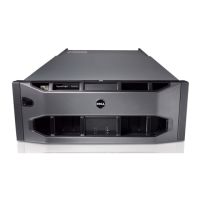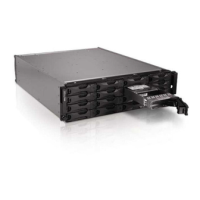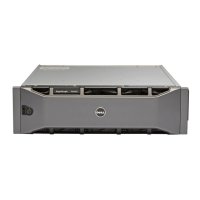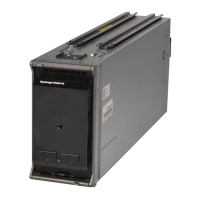March 2013 Dell EqualLogic Configuration Guide v14.1 7-64
more than 2 non-stacking switches, R-STP must be enabled on all ports used for inter-switch
trunks. All non-inter-switch trunk ports should be marked as “edge” ports or set to “portfast”.
• Support for unicast storm control: iSCSI in general, and Dell EqualLogic SANs in particular can
send packets in a very “bursty” profile that many switches could misdiagnose as a virally induced
packet storm. Since the SAN should be isolated from general Ethernet traffic, the possibility of
actual viral packet storms occurring is non-existent. In an EqualLogic SAN, the switches must
always pass Ethernet packets regardless of traffic patterns.
• Support for Inter-Switch Trunking (IST) or Stacking: IST support is required to link all switches in
SAN infrastructure together. For stacking capable switches, the use of stacking ports for IST is
assumed. A good rule of thumb for stacking link bandwidth would be a minimum 20 Gbps full-
duplex.
• Support for VLAN functionality.
Note: VLANs can be used as a means of isolating out-of-band EqualLogic management
traffic. Dell recommends this strategy where networking resources are limited.
Otherwise, it is recommended to use a physically separated network dedicated to iSCSI
traffic that is not shared with other traffic. If sharing the same physical networking
infrastructure is required, then use Data Center Bridging (DCB) for EqualLogic SAN.
• Support for creating Link Aggregation Groups (LAG): For non-stacking switches, the ability to
bind multiple physical ports into a single logical link for use as an inter-switch trunk (IST) is
required. The switch should support designating one or more ports for IST (via Link Aggregation
Groups). The switch should support creation of LAGs consisting of at least eight 1Gbps ports or at
least two 10Gbps ports.
Note: For 1GbE SANs, using non-stacking switches to connect three or more EqualLogic
arrays into a single group may negatively impact SAN I/O throughput performance.
7.2.1 Connecting SAN switches in a Layer 2 network
When more than one SAN switch is required, each switch connected to the array group members will
be in the same subnet. These switches must be interconnected to provide a single switched Ethernet
fabric. Figure 19 shows the two common methods for interconnecting switches, using either stacking
switches or non-stacking switches.
Figure 19 Switch Interconnects
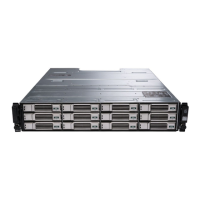
